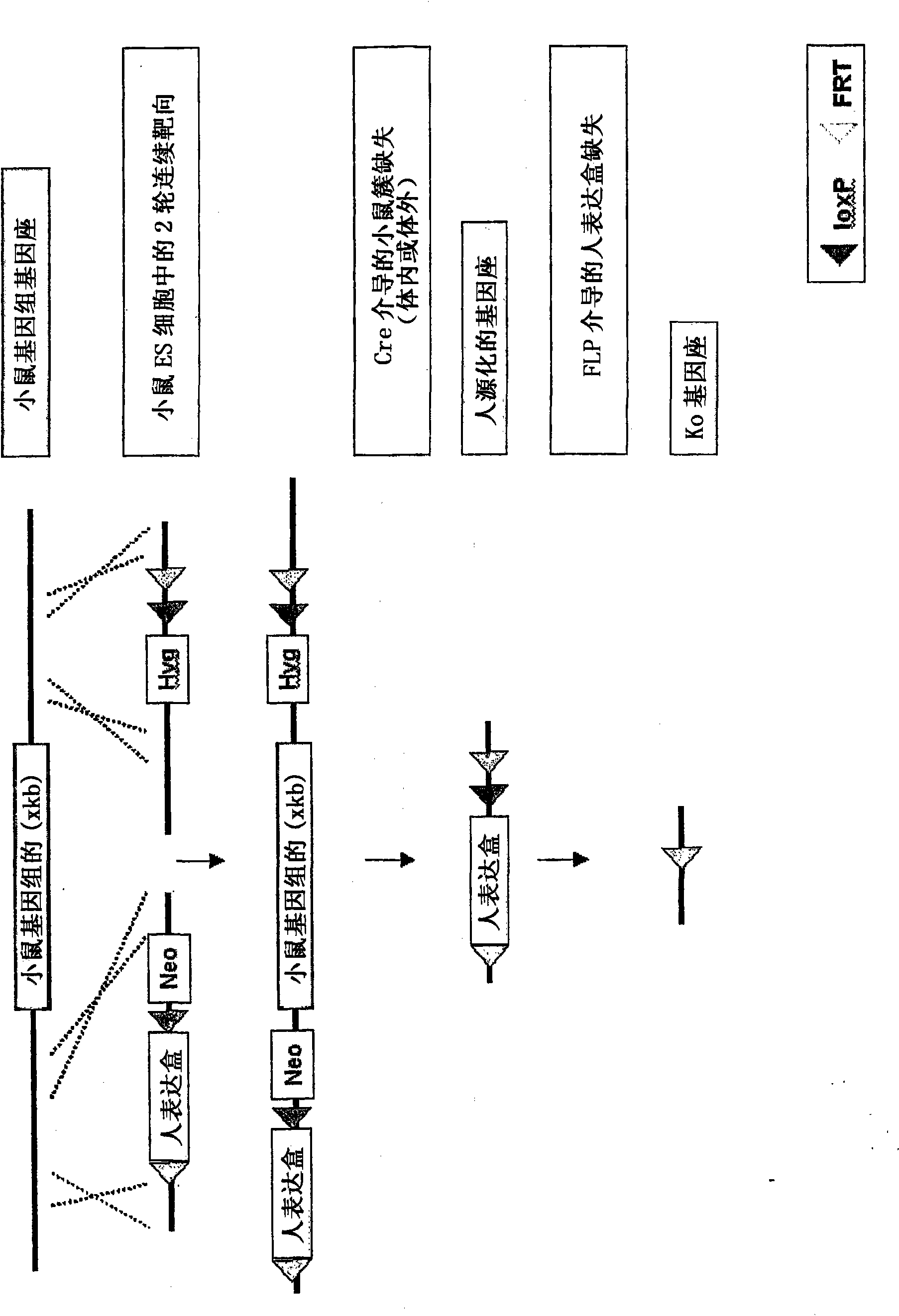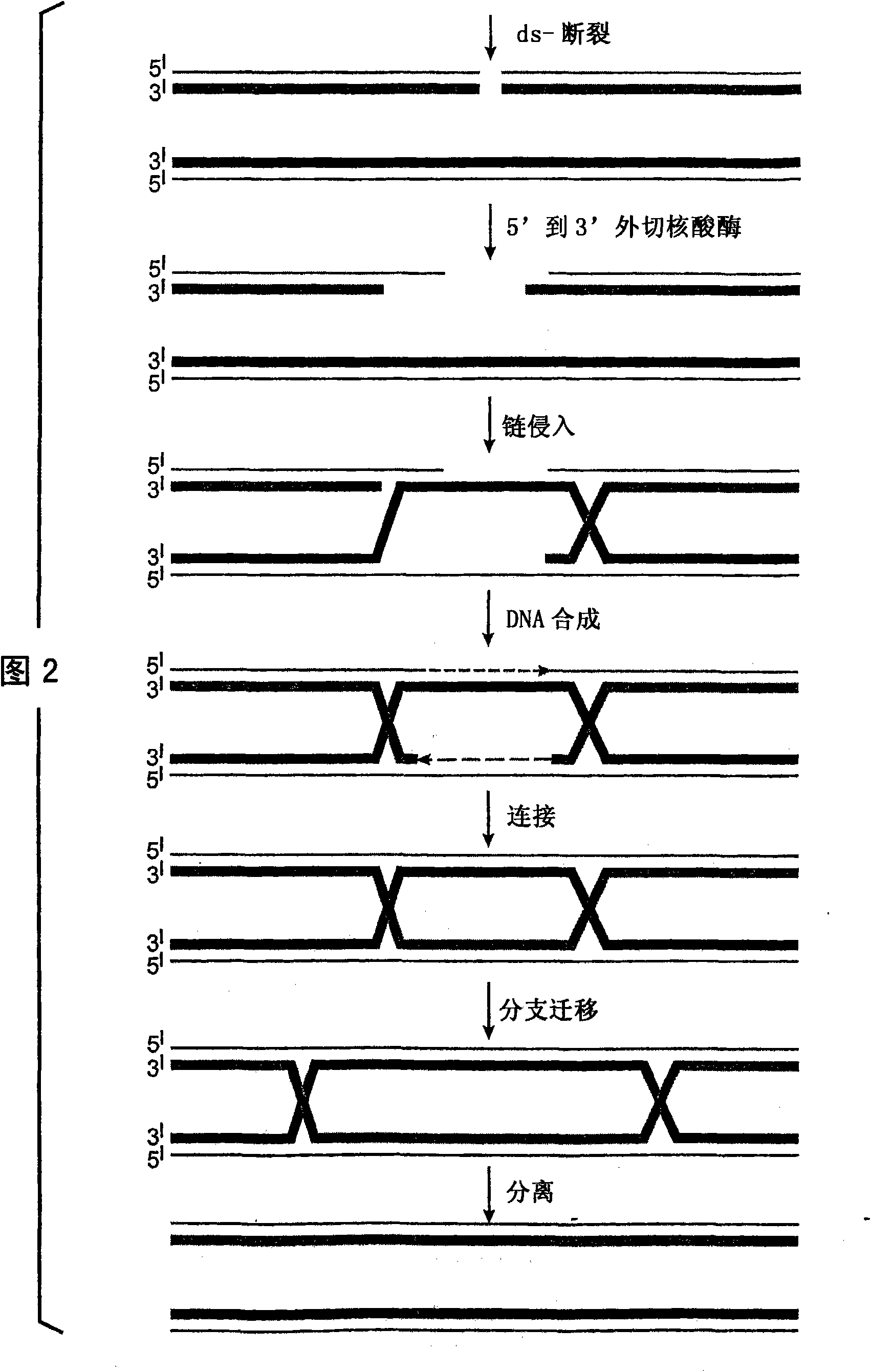Two step cluster deletion and humanisation
A humanized and mouse technology, applied in the field of humanized mice, to achieve the effect of promoting production and reducing the risk of cumulative damage
- Summary
- Abstract
- Description
- Claims
- Application Information
AI Technical Summary
Problems solved by technology
Method used
Image
Examples
Embodiment 1
[0121] Example 1: Humanization of CYP3A4 using the corresponding human promoter and mouse CYP3A cluster knockout
[0122] The mouse CYP3A cluster is flanked by loxP and FRT sites, and the CYP3A4 expression cassette is inserted into one end of the mouse cluster, as in Figure 7 , thus allowing the expression of human CYP3A4 under the control of the 13 kb human CYP3A4 promoter.
[0123] The loxP sequence element included in the targeting vector allows Cre-mediated deletion of the mouse CYP3A cluster, thereby allowing expression of CYP3A4 in the absence of the corresponding mouse gene (see Figure 7 ).
[0124] Subsequently, the FRT sequence elements allow Flp-mediated deletion of the human expression cassette, resulting in a complete knockout at the mouse CYP3A locus ( Figure 7 ).
Embodiment 2
[0125] Example 2: Humanization of CYP2C9 using the corresponding human promoter and mouse CYP2C cluster knockout
[0126] The mouse CYP2C cluster is flanked by loxP and FRT sites, and a CYP2C9 expression cassette is inserted into one end of the mouse cluster, as in Figure 8 , thus allowing the expression of human CYP2C9 under the control of the 12 kb human CYP2C9 promoter.
[0127] The loxP sequence element included in the targeting vector allows Cre-mediated deletion of the mouse CYP2C cluster, thereby allowing expression of CYP2C9 in the absence of the corresponding mouse gene (see Figure 8 ).
[0128] Subsequently, the FRT sequence elements allow Flp-mediated deletion of the human expression cassette, resulting in a complete knockout at the mouse CYP2C locus ( Figure 8 ).
Embodiment 3
[0129] Example 3: Humanization of CYP2D6 using the corresponding human promoter and mouse CYP2D cluster knockout
[0130] The mouse CYP2D cluster is flanked by loxP and FRT sites, and the CYP2D6 expression cassette is inserted into one end of the mouse cluster, as in Figure 9 , thus allowing the expression of human CYP2D6 under the control of the 9 kb human CYP2D6 promoter.
[0131] The loxP sequence element included in the targeting vector allows Cre-mediated deletion of the mouse Cyp2d cluster, thereby allowing expression of CYP2D6 in the absence of the corresponding mouse gene. Subsequently, the FRT sequence elements allow Flp-mediated deletion of the human expression cassette, resulting in a complete knockout at the mouse CYP2D locus.
[0132] The use of specific primers allows analysis of mouse chromosomes by PCR. The results demonstrate successful introduction of the desired human replacement CYP2D gene sequence and deletion of the mouse Cyp2d cluster (see Figure 10...
PUM
 Login to View More
Login to View More Abstract
Description
Claims
Application Information
 Login to View More
Login to View More - R&D
- Intellectual Property
- Life Sciences
- Materials
- Tech Scout
- Unparalleled Data Quality
- Higher Quality Content
- 60% Fewer Hallucinations
Browse by: Latest US Patents, China's latest patents, Technical Efficacy Thesaurus, Application Domain, Technology Topic, Popular Technical Reports.
© 2025 PatSnap. All rights reserved.Legal|Privacy policy|Modern Slavery Act Transparency Statement|Sitemap|About US| Contact US: help@patsnap.com



